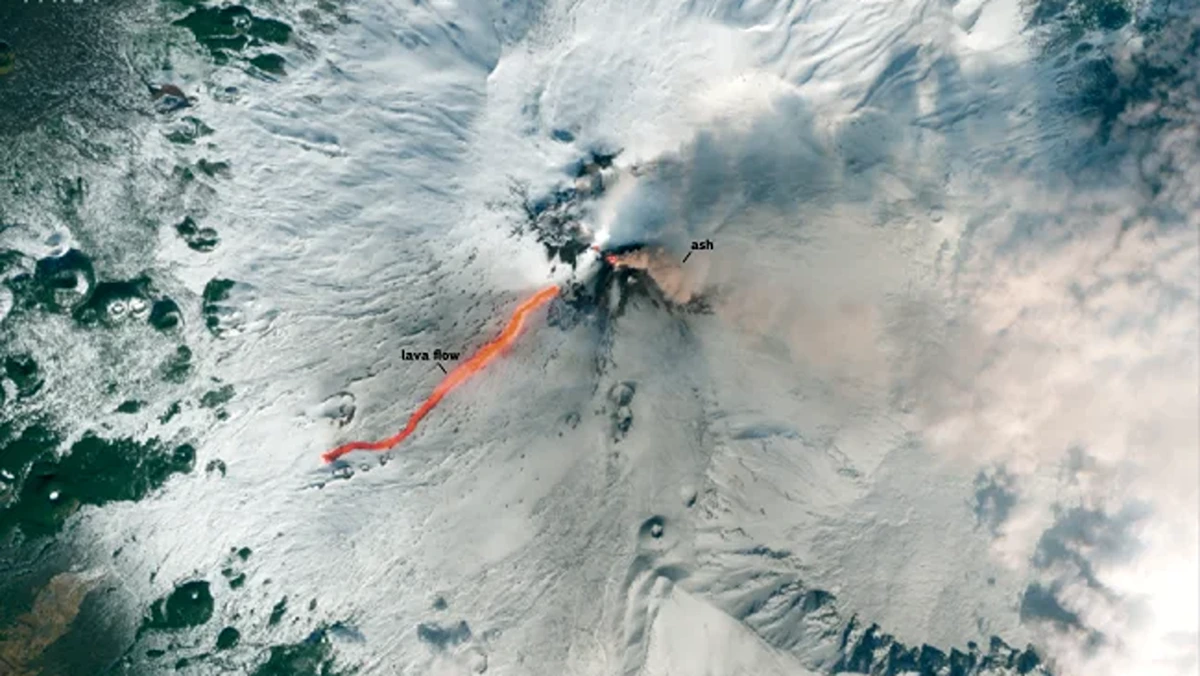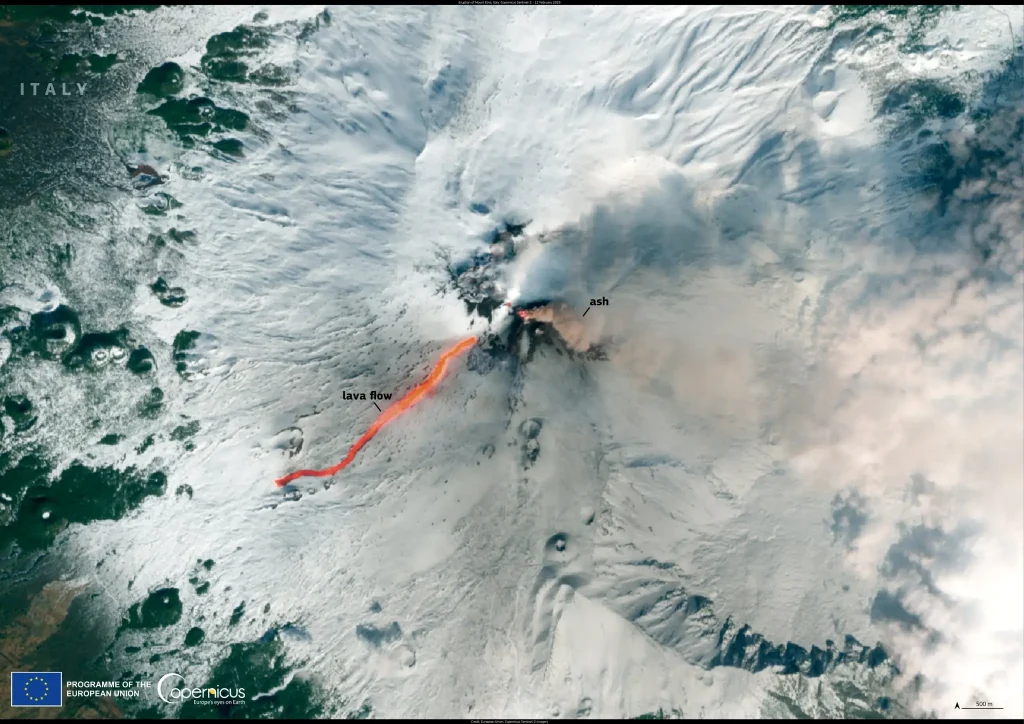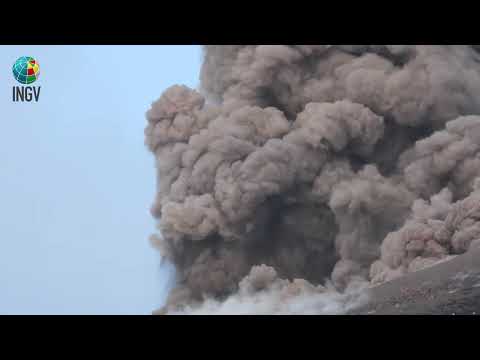Satellite view shows active lava flow cutting through snow-covered Mount Etna
A high-resolution Sentinel-2 satellite image captured on February 12, 2025, shows an active lava flow on the snow-covered slopes of Mount Etna, with ash emissions spreading from the summit.

Satellite image of Etna volcano acquired by Sentinel-2 satellite on February 12, 2025. Image credit: CopernicusEU/Sentinel-2
A high-resolution Sentinel-2 satellite image, captured on February 12, provides a detailed view of the ongoing eruptive activity at Mount Etna, Italy.
The Copernicus Sentinel-2 satellite imagery, combined with data from ground-based monitoring networks operated by the National Institute of Geophysics and Volcanology (INGV), provides valuable insights into the ongoing volcanic processes.
The image reveals an active lava flow extending across the snow-covered slopes of the volcano, with ash plumes dispersing from the summit.
Thermal imagery highlights the heat signature of the lava, while visible-light observations reveal the extent of the lava field and ash dispersion.

Recent observations indicate that the eruptive activity, which began on February 6, produced lava flows, Strombolian explosions, and intermittent ash emissions.
The most intense phase occurred on February 12, when strong explosive eruptions prompted authorities to raise the Aviation Color Code to Red. The lava flow extended approximately 2.6 km (1.6 miles), reaching an elevation of 2 200 m (7 200 feet), with an estimated volume of 250 000 m³ (8.8 million ft³).
On February 14, INGV downgraded the Aviation Color Code from Red to Orange at 17:01 UTC following a decline in explosive activity. Ash emissions remained confined to the summit area, and surveillance cameras confirmed a reduction in intensity.
Earlier that day, at 07:51 UTC, the Aviation Color Code had been briefly raised to Red due to a sudden increase in summit activity, though the volcanic cloud height was not estimable at the time.
Read more:
Technical data from INGV’s GNSS monitoring network reported no deformations in the past week though minor variations were observed at Cratere del Piano (CDP) at the onset of summit effusive activity. Infrasound activity was sporadic, with moderate signals recorded before declining in the following days.
During the previous activity from November 6 to 12, 2024, lava fountaining and gas emissions were observed at the summit craters, with ash plumes rising to 9.5 km (31 200 feet) a.s.l. and drifting eastward, affecting Milo, Fornazzo, Mascali, and Torre Archirafi.
Mount Etna is a composite stratovolcano that stands at 3 357 m (11 014 feet) a.s.l. and is one of the world’s most active volcanoes, with an eruptive history spanning over 150 confirmed Holocene periods.
It lies within the Sicily Volcanic Province, part of a subduction zone on continental crust exceeding 25 km (15.5 miles) in thickness.
References:
1 Etna – INGV/VONA – February 14, 2025
2 Etna – GVP – Accessed on February 15, 2025
Rishika holds a Master’s in International Studies from Stella Maris College, Chennai, India, where she earned a gold medal, and an MCA from the University of Mysore, Karnataka, India. Previously, she served as a Research Assistant at the National Institute of Advanced Studies, Indian Institute of Science, Bengaluru, India. During her tenure, she contributed as a Junior Writer for Europe Monitor on the Global Politics website and as an Assistant Editor for The World This Week. Her work has also been published in The Hindu newspaper, showing her expertise in global affairs. Rishika is also a recipient of the Women Empowerment Award at the district level in Haryana, India, in 2022.




Commenting rules and guidelines
We value the thoughts and opinions of our readers and welcome healthy discussions on our website. In order to maintain a respectful and positive community, we ask that all commenters follow these rules.